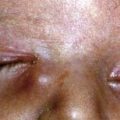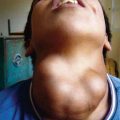Chapter 224 Q Fever (Coxiella burnetii)
Centers for Disease Control and Prevention. Potential for Q fever infection among travelers returning from Iraq and the Netherlands. Official CDC health advisory (website). www2a.cdc.gov/han/archivesys/ViewMsgV.asp?AlertNum=00313. Accessed August 25, 2010
Delsing CE, Kullberg BJ. Q fever in the Netherlands: a concise overview and implications of the largest ongoing outbreak. Neth J Med. 2008;66:365-367.
Fournier PE, Etienne J, Harle JR, et al. Myocarditis, a rare but severe manifestation of Q fever: Report of 8 cases and review of the literature. Clin Infect Dis. 2001;32:1440-1447.
Kobbe R, Kramme S, Kreuels B, et al. Q fever in young children, Ghana. Emerg Infect Dis. 2008;14:344-346.
La Scola B, Maltezou HC. Legionella and Q fever community acquired pneumonia in children. Paediatr Resp Rev. 2004;5(Suppl):S171-S177.
Maltezou HC, Constantopoulou I, Kallergi C, et al. Q fever in children in Greece. Am J Trop Med Hyg. 2004;70:540-544.
Maltezou HC, Raoult D. Q fever in children. Lancet Infect Dis. 2002;2:686-691.
Maurin M, Raoult D. Q fever. Clin Microbiol Rev. 1999;12:518-553.
Nourse C, Allworth A, Jones A, et al. Three cases of Q fever osteomyelitis in children and a review of the literature. Clin Infect Dis. 2004;39:e61-e66.
Parker NR, Barralet JH, Bell AM. Q fever. Lancet. 2006;367:679-688.
Raoult D, Marrie TJ, Mege JL. Natural history and pathophysiology of Q fever. Lancet Infect Dis. 2005;5:219-226.
Raoult D, Tissot-Dupont H, Foucault C, et al. Q fever 1985–1998. Clinical and epidemiologic features of 1,383 infections. Medicine (Baltimore). 2000;79:109-123.
Ravid S, Shahar E, Genizi J. Acute Q fever in children presenting with encephalitis. Neurol. 2008;38:44-46.
Richardus JH, Dumas AM, Huisman J, et al. Q fever in infancy: a review of 18 cases. Pediatr Infect Dis. 1985;4:369-373.
Ruiz-Contreras J, Montero RG, Amador JT, et al. Q fever in children. Am J Dis Child. 1993;146:300-302.
Terheggen U, Leggat PA. Clinical manifestations of Q fever in adults and children. Travel Med Infect Dis. 2007;5:159-164.
Tissot-DuPont H, Raoult D, Brouqui P, et al. Epidemiologic features and clinical presentation of acute Q fever in hospitalized patients: 323 French cases. Am J Med. 1992;93:427-434.
Ughetto E, Gouriet F, Raoult D, et al. Three years experience of real-time PCR for the diagnosis of Q fever. Clin Microbiol Infect. 2009;15(Suppl 2):200-201.






